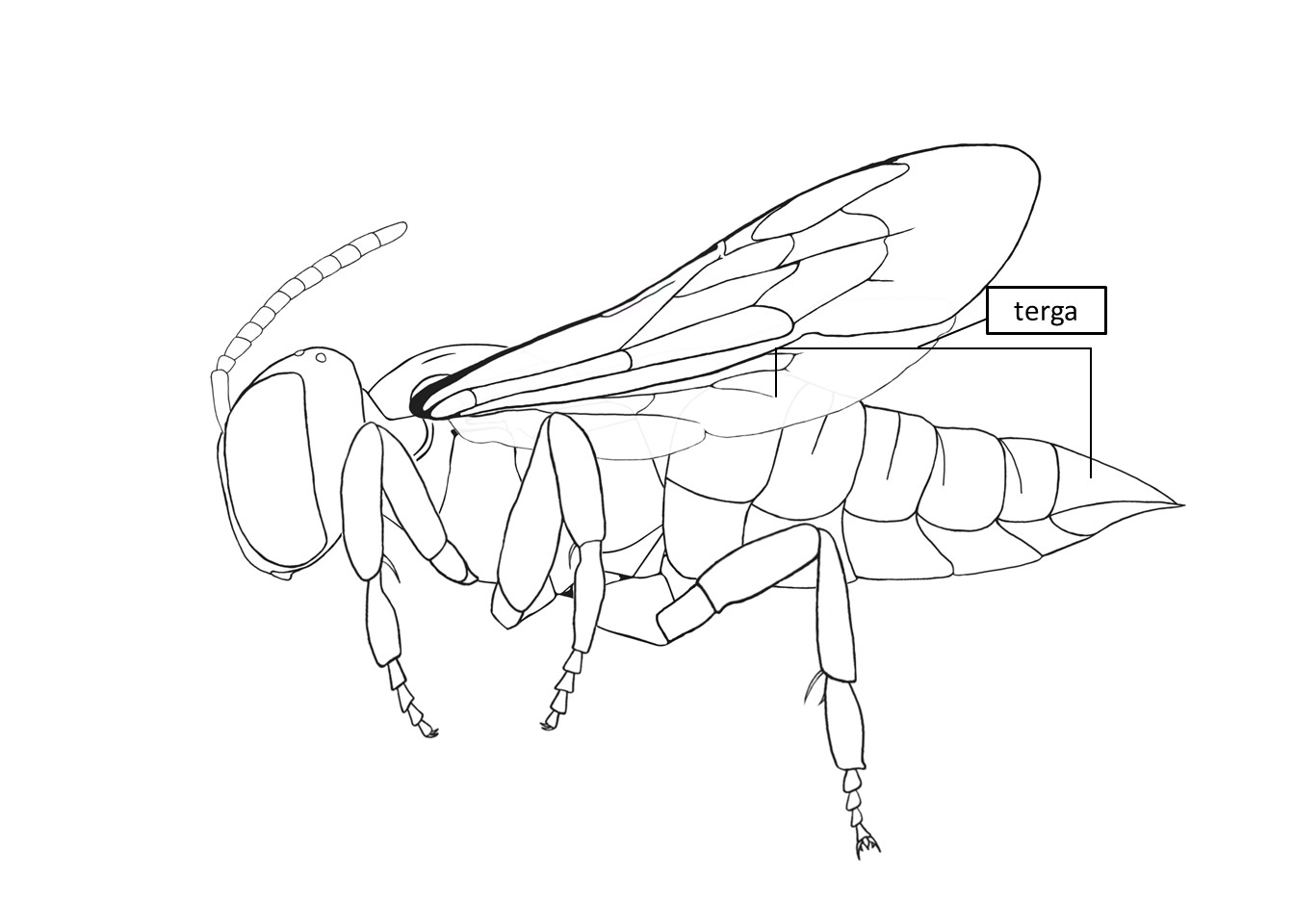Family: Megachilidae
Subfamily: Megachilinae
Tribe: Anthidiini
Genus: Anthidioma Pasteels, 1984
Subgenera: none
Common name: none
Anthidioma females are medium-sized black bees with a stocky build that range in body length from 8–13 mm. They have abundant long grey to white hairs and no maculations on their thorax or abdomen (Michener 2007Michener 2007:
Michener, C.D. 2007. The Bees of the World (2nd ed.). Johns Hopkins University Press, Baltimore and London, 953 pp.). They are not commonly found. Males of this genus are unknown (Michener 2007Michener 2007:
Michener, C.D. 2007. The Bees of the World (2nd ed.). Johns Hopkins University Press, Baltimore and London, 953 pp.).
(modified from Michener 2007Michener 2007:
Michener, C.D. 2007. The Bees of the World (2nd ed.). Johns Hopkins University Press, Baltimore and London, 953 pp.)
 not carinatecarinate:
not carinatecarinate: less than twice as long as broad.
less than twice as long as broad. without impunctateimpunctate:
without impunctateimpunctate:Anthidioma is most similar morphologically to Afranthidium and Pseudoanthidium, however, they differ in the lack of hair on the propodeumpropodeum:
the last segment of the thorax
and the absence of yellow maculations (Michener 2007Michener 2007:
Michener, C.D. 2007. The Bees of the World (2nd ed.). Johns Hopkins University Press, Baltimore and London, 953 pp.).
There are no known invasives.
Floral associations of Anthidioma are largely unknown; however, a single specimen of Anthidioma was observed on Fabaceae (Gess and Gess 2007Gess and Gess 2007:
Gess, S.K. and F.W. Gess. 2007. Notes on nesting and flower visiting of some anthidiine bees (Hymenoptera: Megachilidae: Megachilinae: Anthidiine) in southern Africa. Journal of Hymenoptera Research 16: 30ndash;50.).
Nesting behavior is unknown. However, Anthidioma is in the series of wool carder bees, so they likely use plant materials to build cotton-lined nest cells rather than using resin.
Anthidioma only occurs in western Cape Providence, South Africa, and Namibia (Michener 2007Michener 2007:
Michener, C.D. 2007. The Bees of the World (2nd ed.). Johns Hopkins University Press, Baltimore and London, 953 pp.).
Distribution map generated by Discover Life -- click on map for details, credits, and terms of use.
Gess, S.K. and F.W. Gess. 2007. Notes on nesting and flower visiting of some Anthidiine bees (Hymenoptera: Megachilidae: Megachilinae: Anthidiine) in Southern Africa. Journal of Hymenoptera Research 16: 30–50.
Griswold, T.L. and V.H. Gonzalez. 2013. A new species of the rare African wool-carder bee genus Anthidioma (Hymenoptera: Megachilidae) from Namibia. African Entomology 21: 117-180.
Michener, C.D. 2007. The Bees of the World (2nd ed.). Johns Hopkins University Press, Baltimore and London, 953 pp.